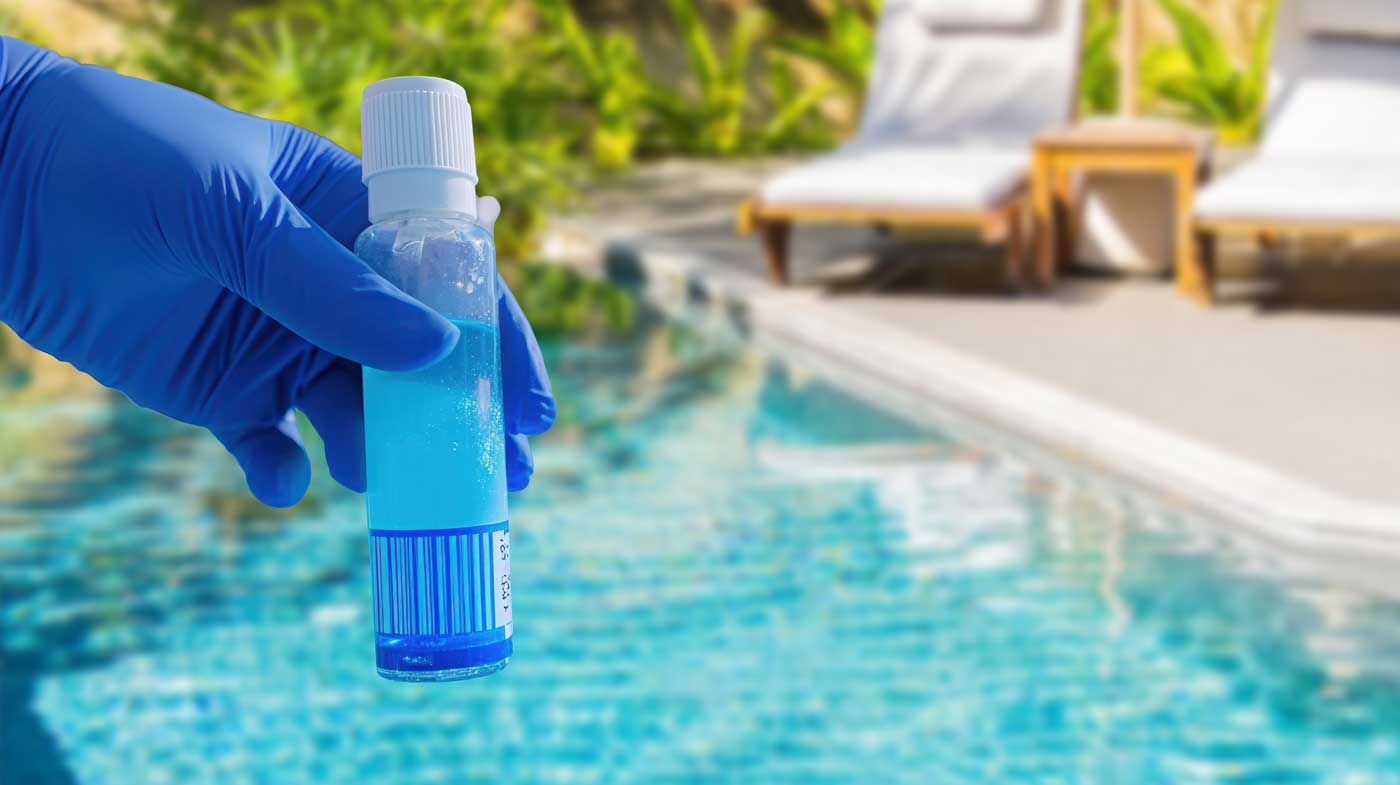Also, warranties can be voided if improper water chemistry is determined to be the reason…
How Do I Know If I Have Enough Salt in My Swimming Pool?
Whether you own an AutoPilot salt chlorine generator or another system, making sure that you have enough salt in your swimming pool water is an integral part of getting the most out of your unit. Maintaining the correct amount of salt helps produce a sufficient amount of chlorine, which will prevent bacteria and algae growth. On the other hand, too much salt can lead to an increased need for additional chemicals to balance your water chemistry, increasing the cost of maintaining your pool.
When it comes to measuring salt levels in your swimming pool, you have a number of methods from which to choose. Some methods are more accurate than others, though they are also more expensive. Some popular salt measurement methods include the following:
- Manually test your water using a liquid reagent kit: Liquid reagent kits typically produce more accurate measurements than do test strips, though they are slightly more expensive. You can purchase liquid reagent kits for about $15. Simply fill the kit’s vials with samples of swimming pool water and add drops of reagent to them, as specified by the kit’s instructions. After you add the reagent, the samples will change color. Compare the colors of the samples to the colors on the kit’s color chart to determine your salt-water concentration.
- Manually test your water using salt test strips: If you do not own an AutoPilot Pool Pilot Digital salt chlorine generator, you still have several options for measuring your swimming pool’s salt level. Two methods involve using test strips. One is a dip and read strip, where you dip the test pad on the end of the strip into the water and pull it out, wait about 20 seconds, then compare the color on the strip to the bottle’s color chart. The second uses a vial, or small container, and about an inch of pool water, where you place the lower portion of the strip for up to 10 minutes. Then read the change in the strip to determine salt level (this is the Aquacheck strip). Again, compare to the chart on the bottle to determine salinity level. You can purchase salt test strips for about $10 online or from any industry retailer.
- Test your water using a handheld digital test strip reader: Handheld digital test strip readers combine test strips with digital technology. Dip a test strip into your swimming pool and then insert it to the reader. After about 15 seconds, the reader will display several measurements. You can purchase a digital test strip reader for about $60 from your local swimming pool supply store.
- Refer to your salt chlorine generator’s digital display: If you own a digital salt chlorine generator, like the AutoPilot Pool Pilot Digital, you can determine your swimming pool’s salt level by simply looking at the control panel’s readout. Every digital salt chlorine generator is equipped with a method to measure salt levels. There are many other manufacturers with digital displays that do not use a sensor, but use a conversion algorithm, based on cell current and voltage and water temperature – a little more technical, but no sensor is used.
- Electronic Meters: Handheld electronic meters allow a quick and accurate method of testing. To us a pocket or pen style meter, turn the meter on and dip the meter tip into the pool water. Then, read the salinity measurement directly from the digital display.
A less-portable meter lets you put a small sample of water into a reservoir cup, press the test button, and an analog needle swings to the salinity level. These are mostly used by service companies and retail stores who perform multiple tests per day, and tend to be higher priced.
The salt level in your swimming pool should be 3,000 ppm (parts per million). Over-salting will not damage your pool system, but will create salty-tasting water. Highly excessive Salinity levels (over 6,000 ppm) will cause corrosion damage to metallic equipment, such as ladders and handrails.
The most common reason for losing salt is through leaks, rain, and bather splash. Having a salt chlorine generator with a digital display certainly makes checking your salt levels easier, but as we have discussed, other methods are available for you.
Please feel free to leave any comments or questions you may have!


This Post Has 0 Comments